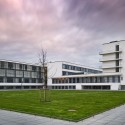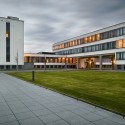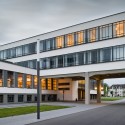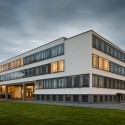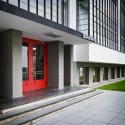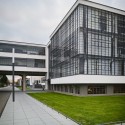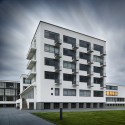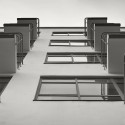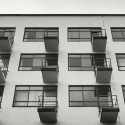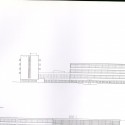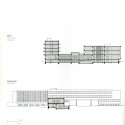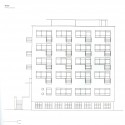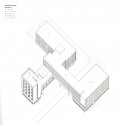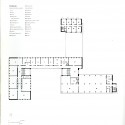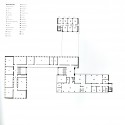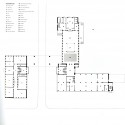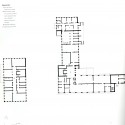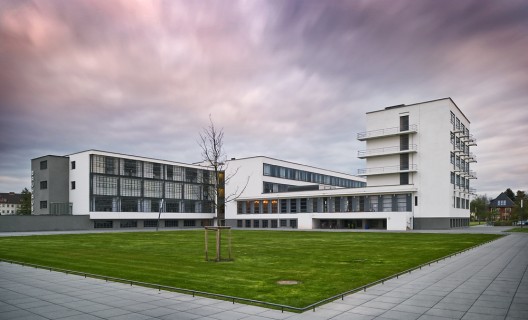
© Thomas Lewandovski
Interested in creating a new form of design found at the intersection of architecture, art, industrial design, typography, graphic design, and interior design, Walter Gropius was inspired to create an institution known as the Bauhaus at Dessau, with an emerging style that would forever influence architecture. Initially a school in Weimar, growing political resentment forced the move to Dessau. Gropius took this as an opportunity to build a school that reflected his hopes for the education that would be had within it's walls. The style of the Dessau facilities hints at the more futuristic style of Gropius in 1914, also showing similarities to the International style more than the Neo-classic style.
More on the Bauhaus after the break.
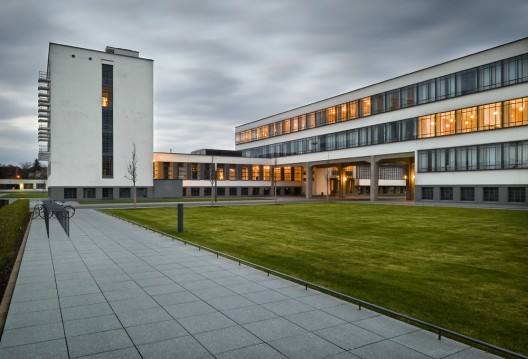
© Thomas Lewandovski
The extensive facilities in the plans of the Bauhaus at Dessau include spaces for teaching, housing for students and faculty members, an auditorium and offices, which were fused together in a pinwheel configuration. From the aerial view, this layout hints at the form of airplane propellers, which were largely manufactured in the surrounding areas of Dessau.
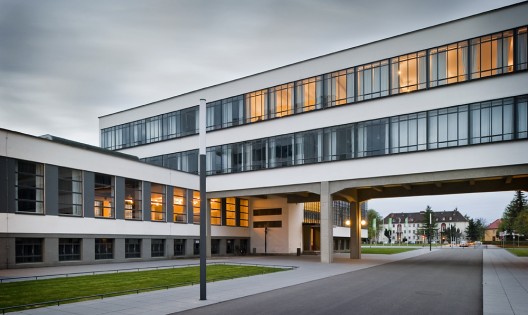
© Thomas Lewandovski
The building is comprised of three wings all connected by bridges. The school and workshop spaces are associated through a large two-story bridge, which creates the roof of the administration located on the underside of the bridge. The housing units and school building are connected through a wing to create easy access to the assembly hall and dining rooms. The educational wing contains administration and classrooms, staff room, library, physics laboratory, model rooms, fully finished basement, raised ground-floor and two upper floors.
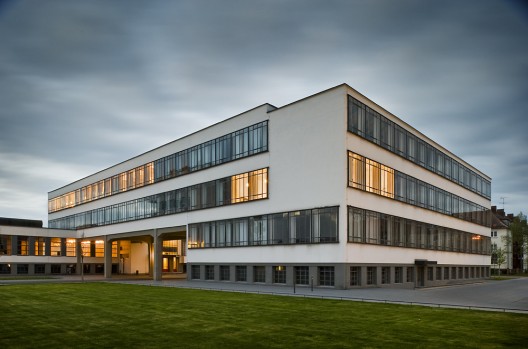
© Thomas Lewandovski
As a practiced architect, Gropius was interested in including structural and technological advancements as he designed this revolutionary school for architecture and design students. Some of the various progressions include a window glazing, a skeleton of reinforced concrete and brickwork, mushroom-like ceilings of the lower level, and roofs covered with asphalt tiles that were meant to be walked on. The total area for construction of the Dessau Bauhaus was 113,400 sq ft, the building itself containing approximately 250,600 sq ft. The total cost was around 902,500 marks, or 27.8 mars per cubic m of space.
It's size "belied the enormous symbolic significance it was to gain as its national and international reputation grew as an experimental and commercial laboratory for design after 1927 as a hotbed of architecture and urban design."
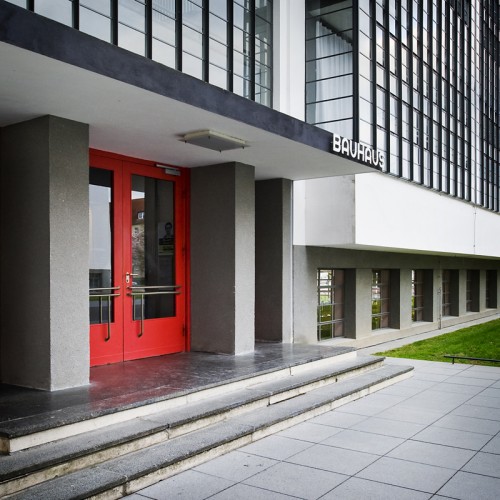
© Thomas Lewandovski
To incorporate the students of the Bauhaus, the interior decoration of the entire building was done by the wall painting workshop, the lighting fixtures by the metal workshop, and the lettering by the print shop. With the Bauhaus building, Gropius thoughtfully laid out his notion of the building as a 'total work' of compositional architecture.
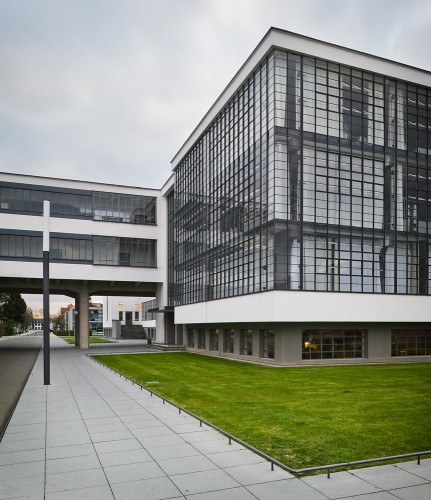
© Thomas Lewandovski
The huge curtain window facade of the workshop building became an integral part of the building's design. Hoping to create transparency, the wall emphasized the 'mechanical' and open spatial nature of the new architecture. These vast windows enabled sunlight to pour in throughout the day, although creating a negative effect on warmer summer days. In order to preserve the curtain wall as one expanse, the load bearing columns were recessed back from the main walls.
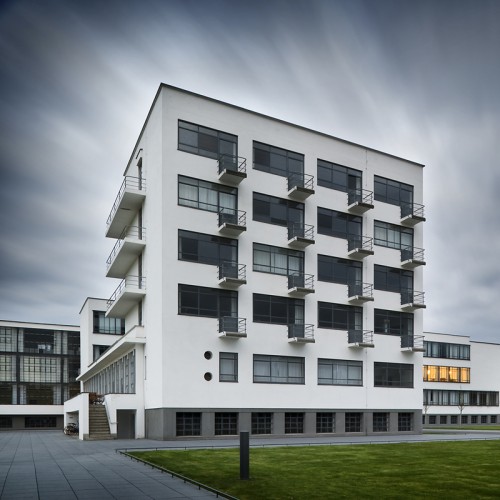
© Thomas Lewandovski
"Like De Stijl painting, in a sense the Bauhaus was composed of basically related functional elements that produced a cohesive interrelated asymmetric whole."
Architect: Walter Gropius
Location: Dessau, Germany
Project Year: 1925-26
Photographs: Thomas Lewandovski, Sharp
References: Sharp






















